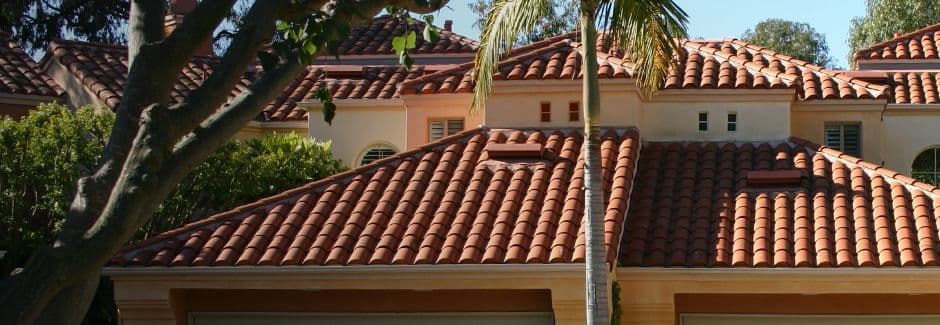
Holistic Approaches to Roofing Estimation Management
Holistic Approaches to Roofing Estimation Management
Roofing estimation management plays a crucial role in the construction industry, determining project feasibility, cost projections, and overall success. To ensure accurate estimates and streamline the estimation process, adopting holistic approaches is essential. In this article, we will explore various holistic methods that can enhance roofing estimation management, ultimately leading to more efficient and cost-effective projects.
Comprehensive Data Collection
Holistic roofing estimation management, with the help of roofing estimating, starts with comprehensive data collection. Gather information about the project's scope, materials, labor, and local regulations. This data provides a solid foundation for accurate estimations. Collaborate with architects, engineers, and contractors to ensure all relevant details are considered. This collaborative approach, with the help of roofing estimating, helps in reducing the chances of unexpected costs and delays.
Technology Integration
Incorporating technology into roofing estimation management can significantly improve accuracy and efficiency. Utilize Building Information Modeling (BIM) software to create 3D models of the roof and its components. This visual representation aids in identifying potential issues and refining estimates. Additionally, roofing estimation software can automate calculations, reducing human error and speeding up the estimation process.
Risk Assessment
Holistic estimation management involves a thorough assessment of potential risks. Consider factors such as weather conditions, material availability, and workforce fluctuations. By identifying and addressing risks upfront, you can adjust estimates accordingly and prevent costly surprises during the project's execution.
Sustainable Practices
Incorporating sustainable practices into roofing estimation management aligns with holistic approaches. Evaluate environmentally friendly materials and energy-efficient solutions. While these options may have higher initial costs, they often lead to long-term savings through reduced maintenance and energy expenses. Moreover, clients and stakeholders increasingly value sustainable initiatives.
Lifecycle Cost Analysis
Looking beyond the initial construction phase, holistic estimation management involves lifecycle cost analysis. Consider the projected maintenance, repair, and replacement costs over the roof's lifespan. This long-term perspective provides a more accurate picture of the project's overall financial impact, helping clients make informed decisions.

Learning and Adaptation
The construction industry is constantly evolving, with new materials, techniques, and regulations emerging. Holistic roofing estimation management requires a commitment to continuous learning and adaptation. Stay updated on industry trends, attend workshops, and collaborate with experts. Adapting to changes ensures that estimates remain relevant and aligned with the latest standards.
Stakeholder Collaboration
A holistic approach involves collaboration among all stakeholders, including clients, contractors, architects, and suppliers. Engage in open communication to gain insights and perspectives from various experts. This collaborative effort fosters a more accurate estimation process, minimizing misunderstandings and enhancing project outcomes.
Value Engineering
Value engineering is another crucial component of holistic roofing estimation management. This approach focuses on optimizing the value of the project by identifying ways to achieve the desired outcome at the lowest possible cost. By evaluating different materials, methods, and design options, you can find opportunities to reduce expenses without compromising quality or performance.
Data Analytics and Historical Data
Utilizing data analytics and historical data can enhance the accuracy of roofing estimation management. Analyze past projects to identify patterns, trends, and cost deviations. This data-driven approach allows for more precise projections and helps in identifying areas where adjustments are needed. Over time, this information can lead to refined estimation processes and better-informed decision-making.
Flexibility in Estimation
Holistic roofing estimation management requires a certain degree of flexibility. As projects progress and circumstances change, estimations might need adjustments. Factors like material price fluctuations, unexpected issues during construction, or scope modifications can impact the original estimates. Being adaptable and ready to revise estimates when necessary ensures that projects remain on track financially.
Quality Assurance and Control
A holistic approach to roofing estimation management should include measures for quality assurance and control. Implement checks and balances to review estimates for accuracy and consistency. Having a standardized review process helps catch errors and ensures that all aspects of the estimation, from materials to labor costs, are accounted for correctly.
Encourage Improvement
Holistic approaches encourage improvement in roofing estimation management. After each project, conduct post-mortem evaluations to assess the accuracy of estimates against the actual costs and project outcomes. Identify areas for improvement and incorporate lessons learned into future estimations. This iterative process fosters a culture of learning and refinement, leading to increasingly accurate estimates over time.
Ethical Considerations
Ethical considerations are an essential part of holistic roofing estimation management. Ensure that estimates are fair and transparent, avoiding overestimation or underestimation to gain a competitive advantage. Honesty and integrity in estimation build trust among stakeholders and contribute to the long-term success of your projects and business.
Conclusion
Incorporating holistic approaches into roofing estimation management is a multifaceted endeavor that requires careful consideration of various factors. By embracing comprehensive data collection, technology, risk assessment, sustainable practices, lifecycle cost analysis, continuous learning, stakeholder collaboration, value engineering, data analytics, flexibility, quality assurance, continuous improvement, and ethical considerations, construction professionals can elevate their estimation processes to a new level of accuracy and reliability.
Frequently Asked Questions (FAQs)
What is holistic roofing estimation management?
Holistic roofing estimation management involves a comprehensive approach to estimating costs for roofing projects. It goes beyond simple calculations and considers factors such as data collection, technology integration, risk assessment, sustainability, lifecycle cost analysis, stakeholder collaboration, and more to ensure accurate and efficient project estimates.
Why is holistic roofing estimation management important?
Holistic approaches enhance the accuracy of roofing estimates by taking into account various variables that can impact project costs. This results in more realistic projections, reduces the likelihood of unexpected expenses, and contributes to the overall success of construction projects.
How does technology integration improve roofing estimation management?
Integrating technology, such as Building Information Modeling (BIM) software and roofing estimation software, streamlines the estimation process. BIM allows for 3D visualization, identifying potential issues, and refining estimates. Estimation software automates calculations, reducing errors and saving time.
What role does sustainability play in holistic approaches to roofing estimation management?
Sustainability considers environmentally friendly materials and energy-efficient solutions. While initial costs may be higher, sustainable practices often lead to long-term savings through reduced maintenance and energy expenses, making them a valuable aspect of holistic estimation management.
How does lifecycle cost analysis impact roofing estimation management?
Lifecycle cost analysis involves evaluating the projected maintenance, repair, and replacement costs of a roof over its lifespan. This long-term perspective provides a more accurate picture of the project's financial impact and helps clients make informed decisions.
Appreciate the creator